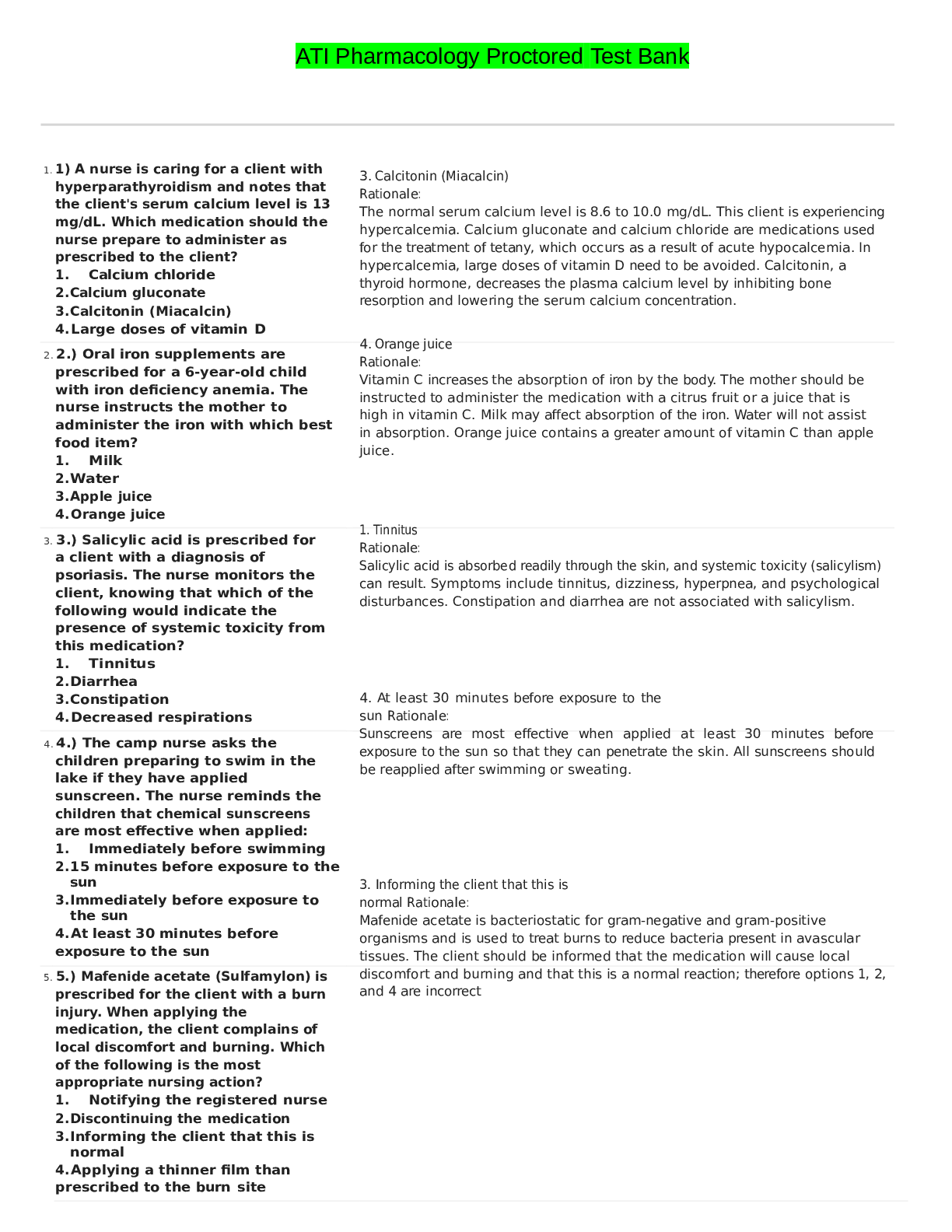*NURSING > QUESTIONS & ANSWERS > OB Proctored Questions and Answers Already Graded A (All)
OB Proctored Questions and Answers Already Graded A
Document Content and Description Below
A nurse is caring for a client who is 2 weeks postpartum following a cesarean birth. Which of the following clinical findings should the nurse identify as an indication of postpartum infection? a. U... nilateral breast pain i. Mastitis - painful or tender localized hard mass and reddened area, usually on one breast. (Pg. 143) b. Persistent abdominal striae i. Stretch marks - expected finding c. Lochia alba i. Lasts approx day 11 up to 4-8 weeks post-birth d. WBC count 12,000/mm3 2. A nurse is assessing client who has preeclampsia during a prenatal visit. Which of the following findings should the nurse report to the provider? a. Blood glucose 110 mg/dL b. Deep tendon reflexes of 2+ c. Urine protein of 3+ i. Severe preeclampsia: consists of blood pressure that is 160/110 mmHg or greater, proteinuria greater than 3+, oliguria, elevated serum creatinine greater than 1.1 mg/dL, cerebral or visual disturbances (headache and blurred vision), hyperreflexia with possible ankle clonus, pulmonary or cardiac involvement, extensive peripheral edema, hepatic dysfunction, epigastric and right upper-quadrant pain, and thrombocytopenia. (pg. 60) d. Hemoglobin 13 g/dL 3. A nurse is providing teaching about the expected effects of magnesium sulfate to a client who is at 28 weeks of gestation and has preeclampsia. Which of the following responses by the nurse is appropriate? a. “This medication improves tissue perfusion.” b. “This medication increases cardiac output.” c. “This medication stabilizes the fetal heart rate.” d. “This medication prevents seizures.” i. Depresses CNS. (Pg 61) ATI Maternal newborn 2 4. A nurse is teaching a prenatal class regarding false labor. Which of the following information should the nurse include? (pg 76) a. “You will have dilation and effacement of the cervix.” i. Sign of true labor b. “Your contractions will become temporarily regular.” . “You will have bloody show.” i. Sign of true labor d. “Your contractions will become more intense when walking.” i. Sign of true labor 5. A nurse manager is revising a maternal unit policy to ensure proper identification of newborns. Which of the following should the nurse include in the policy? a. Check the newborn’s identification using the crib card. b. Replace the infant’s identification band after his name has been recorded. c. Require visitors to wear an identification band. d. Obtain an imprint of the infant’s feet prior to taking him to the nursery. 6. A nurse is caring for a client who delivered by cesarean birth 6 hr ago. The nurse notes a steady trickle of vaginal bleeding that does not stop with fundal massage. Which of the following actions should the nurse take? a. Apply an ice pack to the incision site. b. Replace the surgical dressing. c. Administer 500 mL lactated Ringer’s IV bolus. i. This is for hydration d. Evaluate urinary output. i. Encourage the client to empty her bladder frequently (every 2 to 3 hr) to prevent possible displacement of the uterus and atony. ii. Frequent voiding of less than 150 mL of urine is indicative of urinary retention with overflow. 7. A nurse is providing discharge instructions to a client who is postpartum and has engorged breasts. Which of the following nonpharmacological comfort measures should the nurse include in the teaching? a. Wear nipple shields during the feeding. b. Use a breast binder for 2 days. c. Use plastic-lined breast pads. d. Apply cabbage leaves after feedings. 8. A nurse is calculating estimated date of birth using Naegele’s rule for a client who is pregnant and whose last menstrual cycle started June 21. Which of the following is the estimated delivery in the next year? a. March 14 b. March 21 c. March 28 i. Naegele’s rule: subtract 3 months from last menstrual period and add 7 days d. April 4 9. A nurse is caring for a client immediately following the delivery of a stillborn fetus. Which of the following actions should the nurse take? a. Inform the client that the law requires her to name the fetus. b. Limit the amount of time the fetus is in the client’s room. i. Have as much time :D c. Instruct the client that an autopsy should be performed within 24 hr. d. Prepare the client for what to expect the fetus to look like. 10. A nurse is observing an adolescent client who is offering her newborn a bottle while he is lying in the bassinet. When the nurse offers to pick the newborn up and place him in the client’s arms, the mother states, “No, the baby is too tired to be held.” Which of the following actions should the nurse take? a. Demonstrate how to hold the newborn and allow client to practice. b. Persuade the client to breastfeed the newborn to promote bonding. c. Offer to take the newborn to the nursery to finish his feeding. d. Insist that the mother pick up the newborn to feed him. 11. A nurse is caring for a client who is in labor. Which of the following findings should prompt the nurse to reassess the client? a. Intense contractions lasting 45 to 60 seconds b. An urge to have a bowel movement during contractions c. A sense of excitement and warm, flushed skin d. Progressive sacral discomfort during contractions 12. A nurse is assessing a client who is at 27 weeks of gestation and has preeclampsia. Which of the following findings should the nurse report to the provider? a. Hemoglobin 14.8 g/dL i. normal b. Urine protein concentration 200 mg/24 hr i. No protein should be detected in urine - indication of kidney damage d/t HTN. ii. Actually no. It’s a maternal adaptation to possibly have proteinuria. Now the only thing is the range. c. Creatinine 0.8 mg/dL i. normal d. Platelet count 60,000/mm3 i. LP: Low platelets (less than 100,000/mm3), resulting in thrombocytopenia, abnormal bleeding and clotting time, bleeding gums, petechiae, and possibly disseminated intravascular coagulopathy 13. A nurse in a clinic is preparing to measure the fundal height of a client who is pregnant. Which of the following actions should the nurse take? a. Lay the tape measure horizontally over the middle of the client’s abdomen. b. Place the client in a left-lateral position to obtain the measurement. c. Ensure that the client has a full bladder before taking the measurement. i. External abdominal ultrasound. d. Measure from the upper border of the pubis to the upper border of the fundus. 14. A nurse is caring for a client who is at 20 weeks of gestation and reports constipation. Which of the following recommendations should the nurse make to help retrieve this common discomfort of pregnancy? a. Include 18 g of fiber in the diet each day. i. Total fiber AI is 25 g/day for women and 38 g/day for men. (Nutrition 2016 ATI) b. Drink 2 to 3 L of water each day. . Pg. 121 increase fluids ii. Suggest that the client increase roughage and fluid intake in diet to assist with discomforts of constipation. c. Add 30 mL of mineral oil to each meal. d. Tale 60 mL of magnesium hydroxide once daily. 15. A nurse is assessing the fetal heart rate for a client who is at 38 weeks of gestation. When using an ultrasound device, the nurse hears blood rushing through the umbilical vessels in synchronization with the fetal heart beat. Which of the following terms should the nurse use to document this finding? a. Goodell’s sign i. Probable sign b. Funic souffle i. Soft, muffled, blowing sound produced by the blood rushing through the umbilical vessels and synchronous with the fetal heart sounds. (Lowdermilk) c. Quickening d. Hegar’s sign i. Probable sign ii. Softening and compressibility of the lower uterus 16. A nurse manager in a newborn nursery is reviewing infection control procedures with a group of newly hired nurses. Which of the following instructions should the nurse manager include in the teaching? a. Allow parents to enter the nursery if they are wearing a mask. i. Pg. 165 ii. Cover gowns or special uniforms are used to avoid direct contact with clothes. b. Place newborn bassinets at least 3 feet apart. i. Pg. 165 ii. Provide individual bassinets, equipped with a thermometer, diapers, T-shirts, and bathing supplies. iii. All personnel who care for newborn should scrub up with antimicrobial soap from elbows to fingertips before entering the nursery. c. Place the newborn’s foot on a sterile field during a heelstick. d. Maintain airborne precautions in the nursery. 17. A nurse is caring for a client who is receiving magnesium sulfate by continuous IV infusion. The nurse notes a respiratory rate of 8/min and absent deep-tendon reflexes. Which of the following medications should the nurse administer? a. Phytonadione i. Vitamin K reversal b. Acetylcysteine i. APAP reversal c. Protamine sulfate i. Heparin reversal d. Calcium gluconate i. Admin for magnesium toxicity ii. Signs of Mg toxicity: absence patellar deep tendon reflexes, urine output <30mL/hr, resp <12/min, decreased LOC, cardiac dysrhythmias 18. A nurse is caring for a client who is 8 hr postpartum followin [Show More]
Last updated: 1 year ago
Preview 1 out of 10 pages
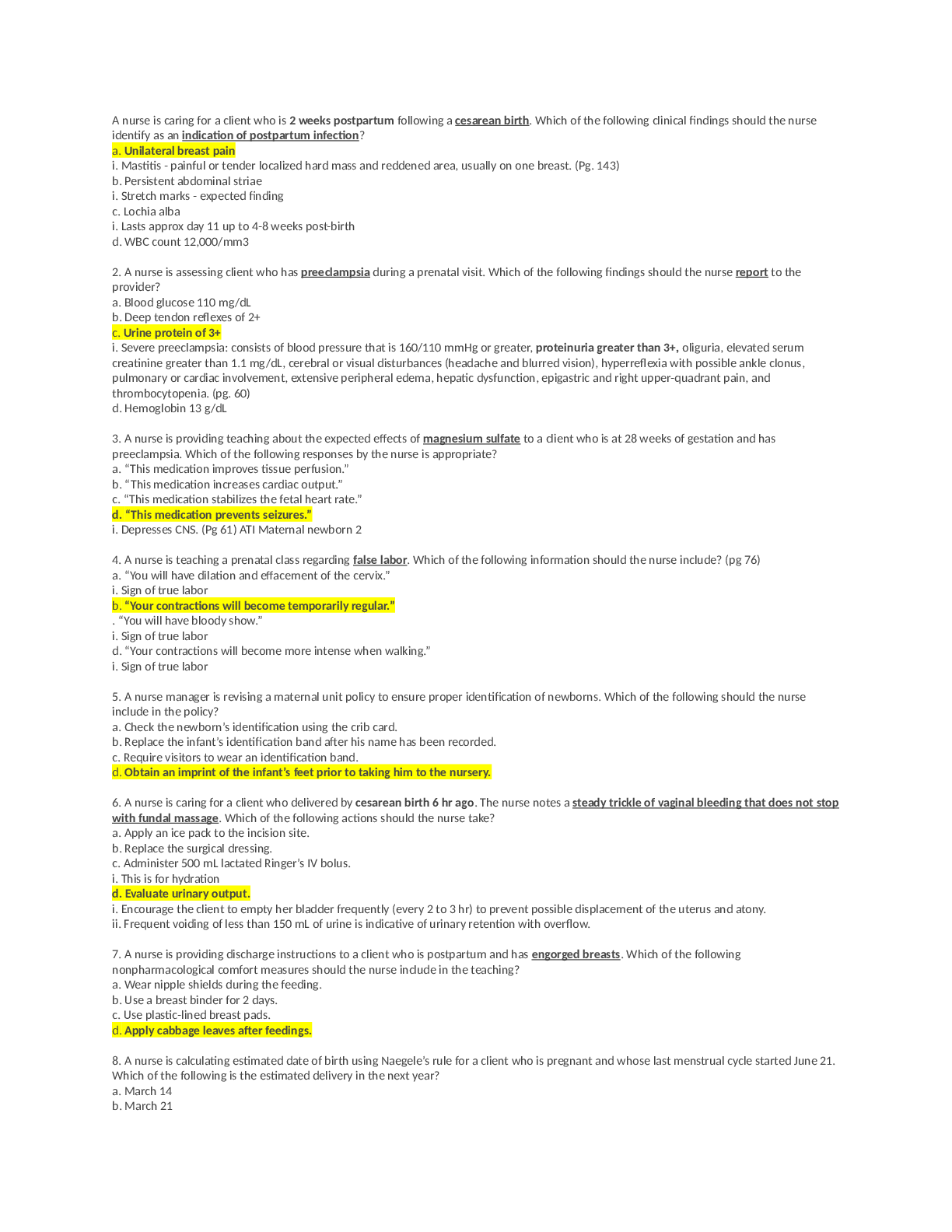
Reviews( 0 )
Document information
Connected school, study & course
About the document
Uploaded On
Jun 09, 2022
Number of pages
10
Written in
Additional information
This document has been written for:
Uploaded
Jun 09, 2022
Downloads
0
Views
65

.png)
.png)
.png)
.png)
.png)
.png)


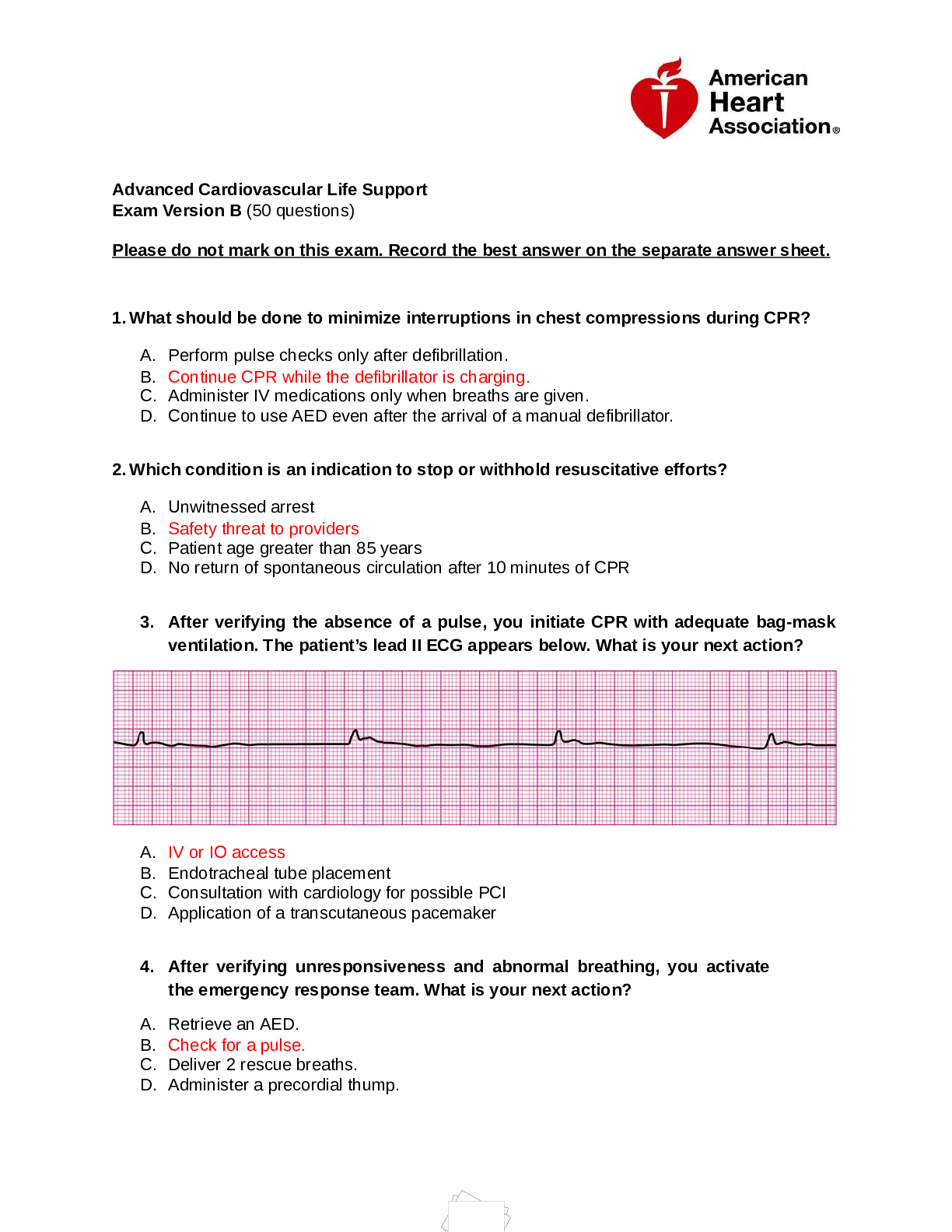
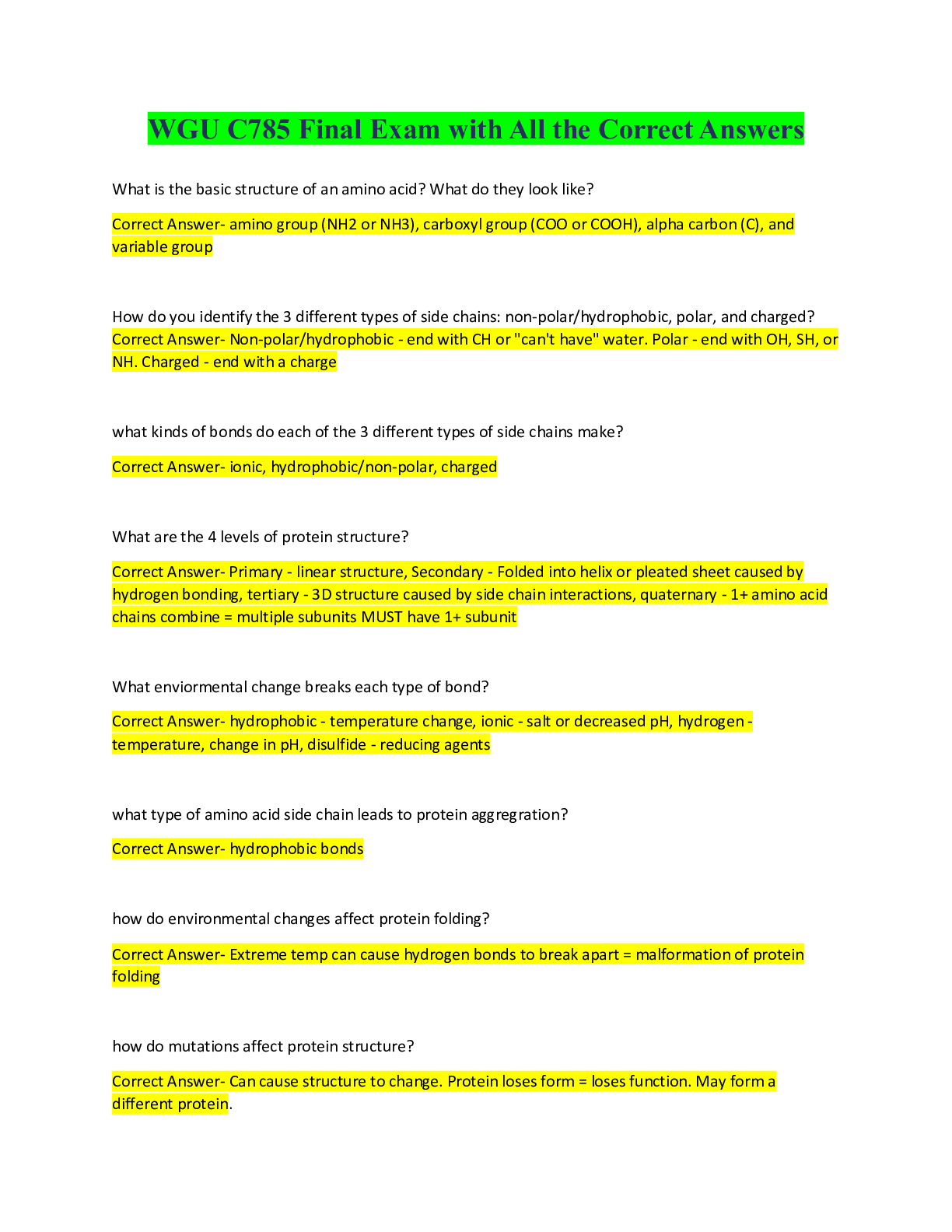
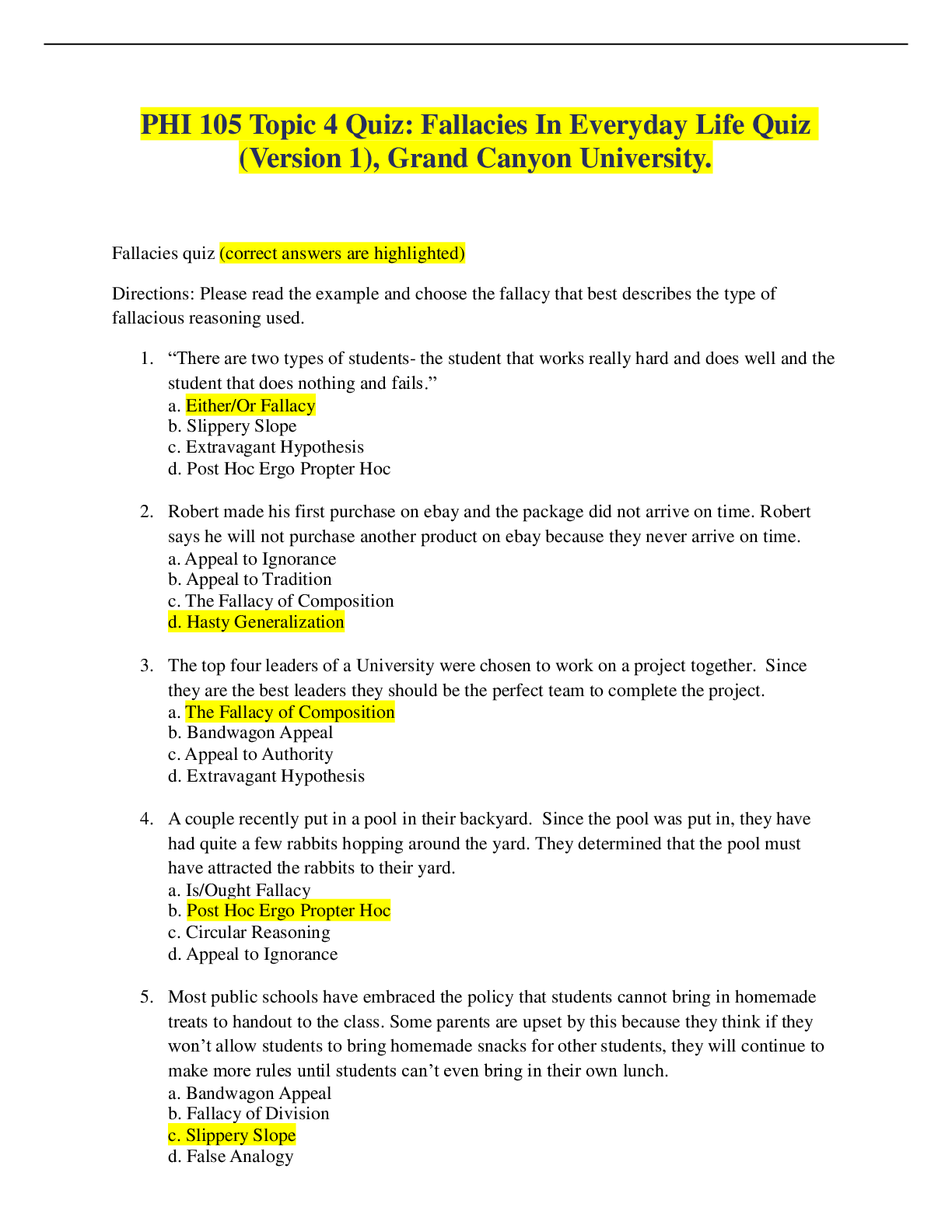
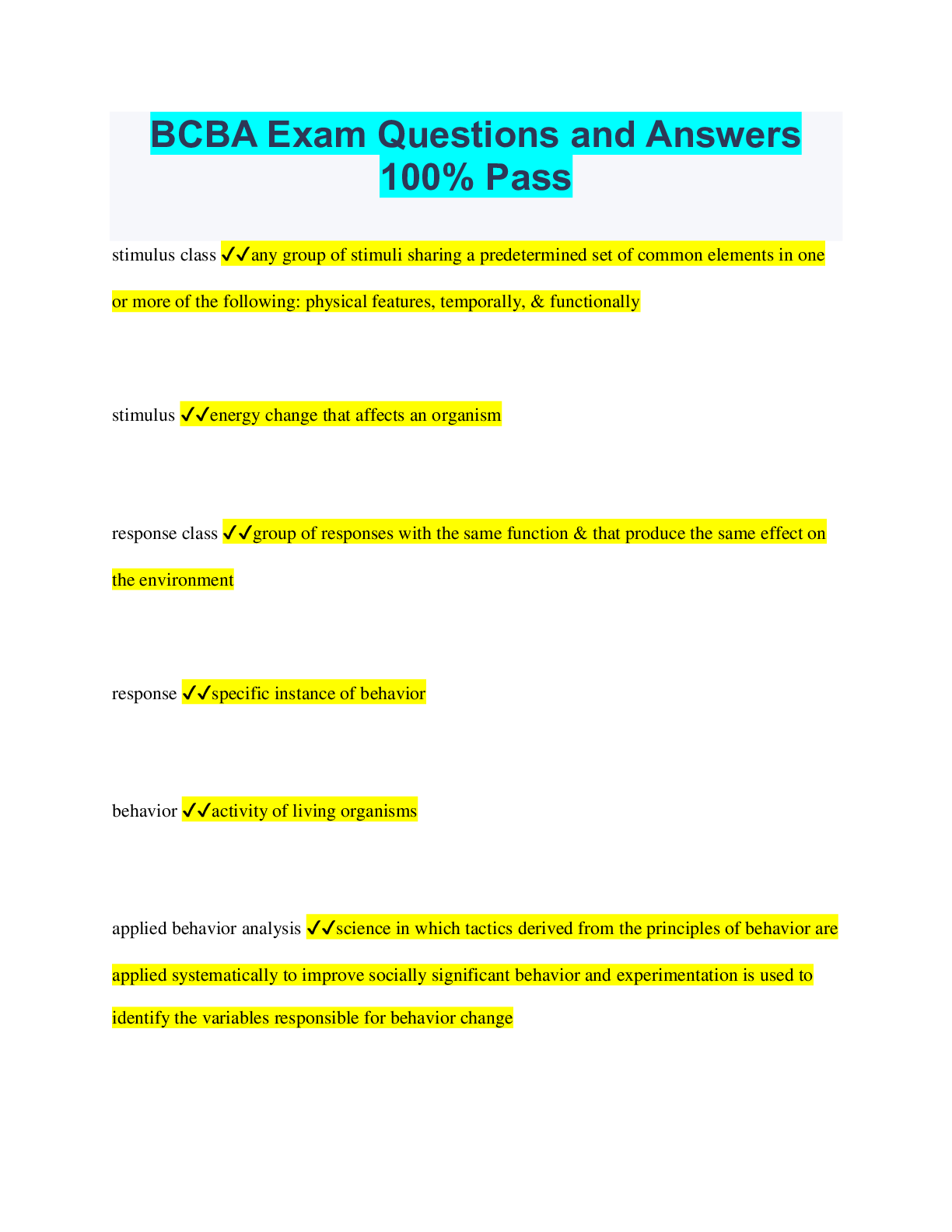
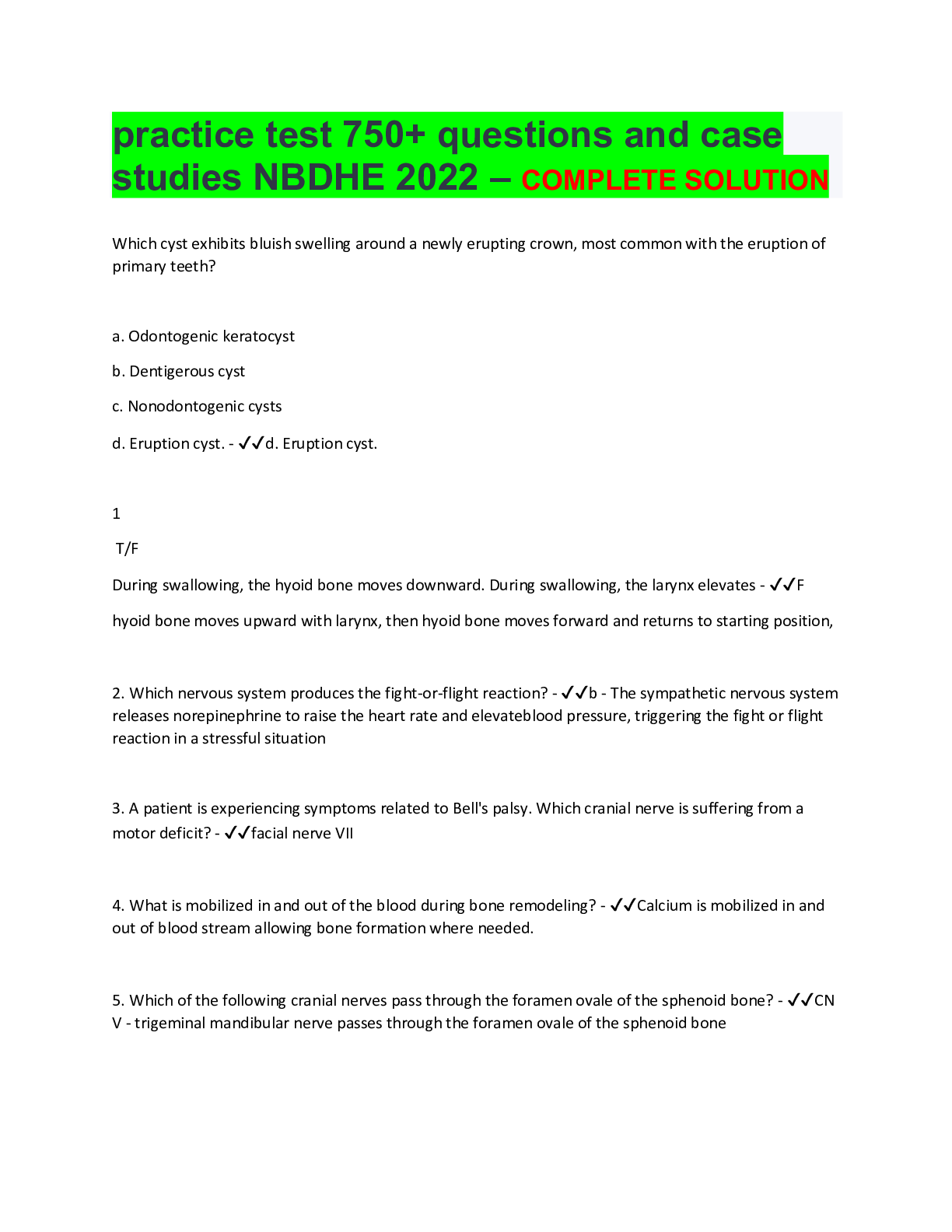
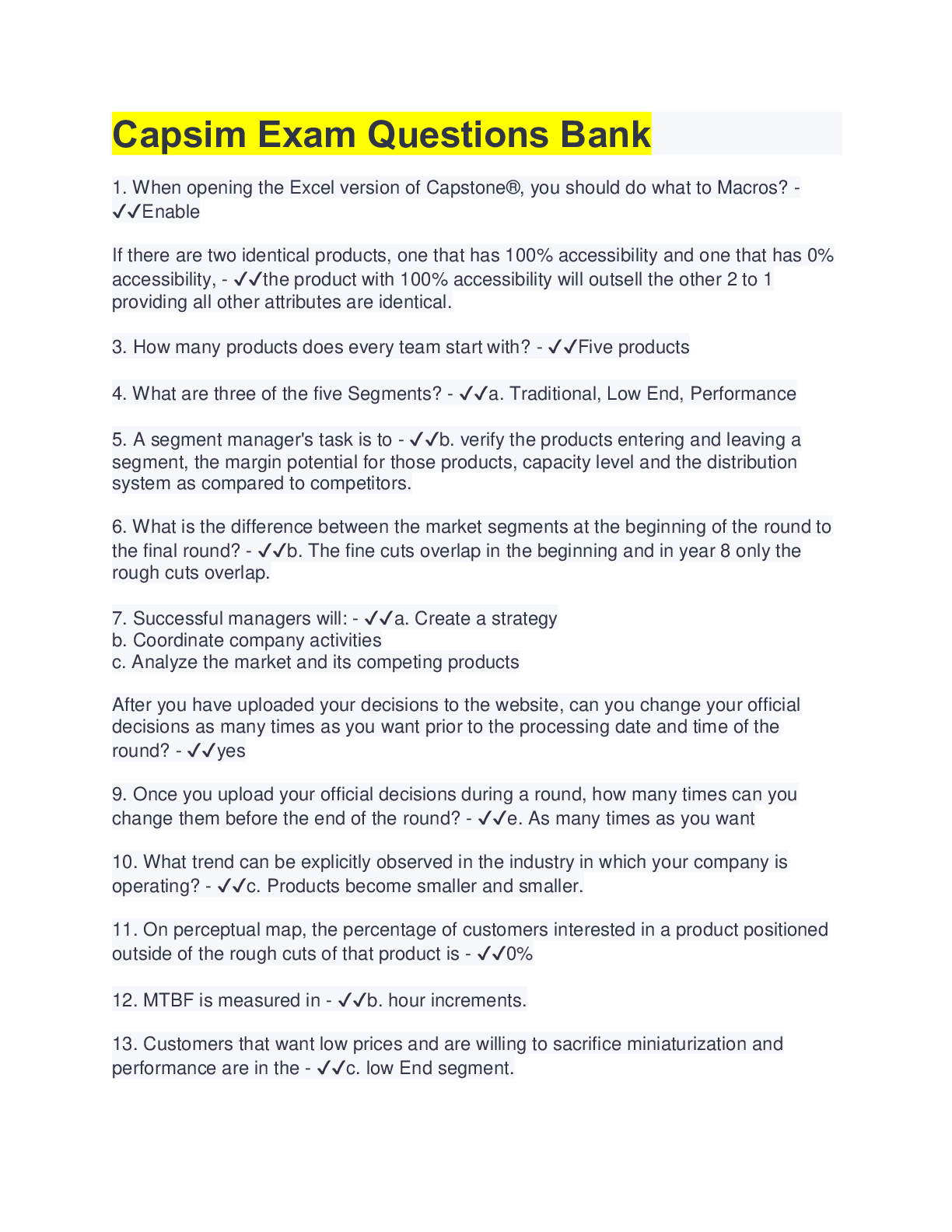



.png)






